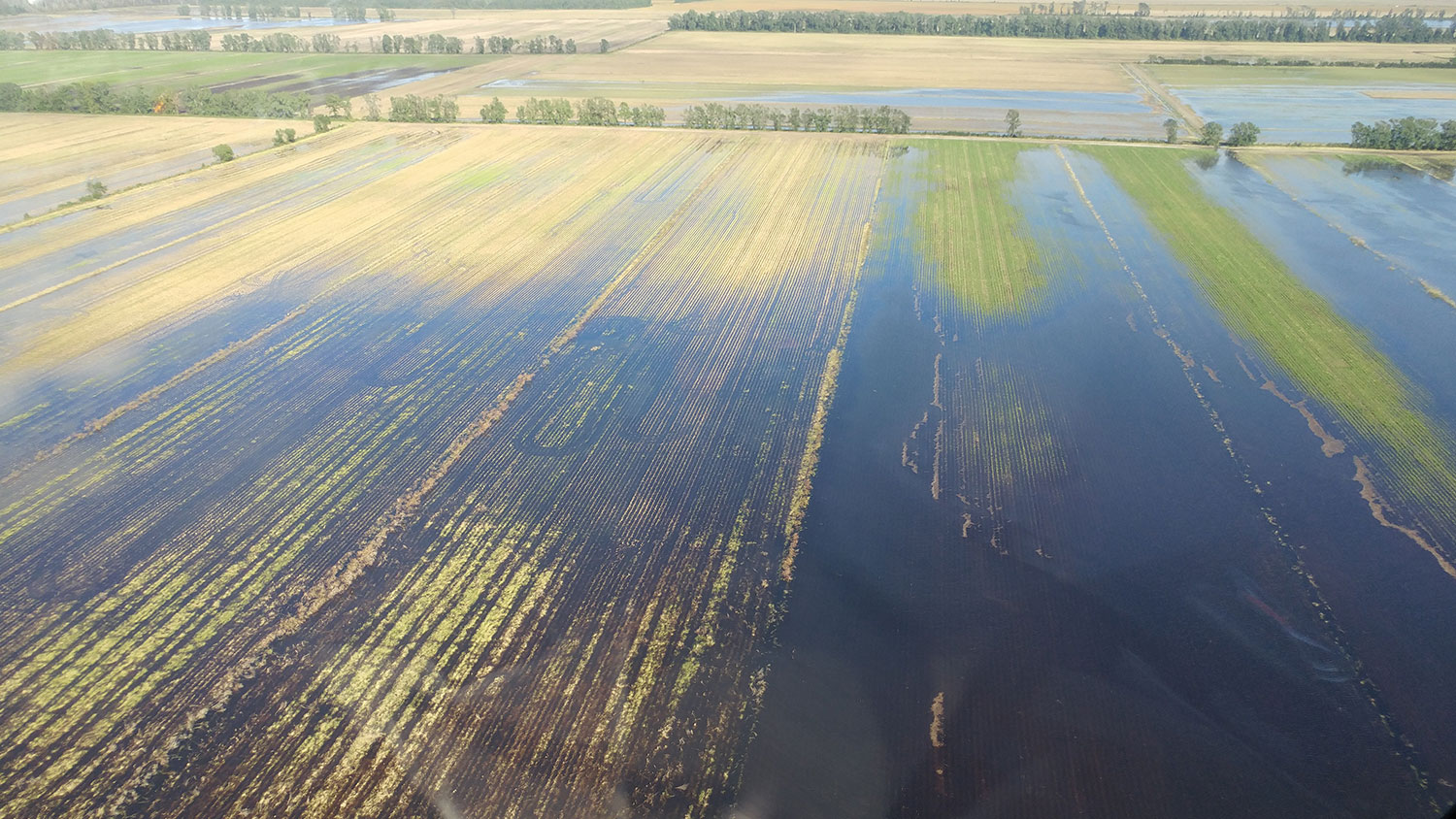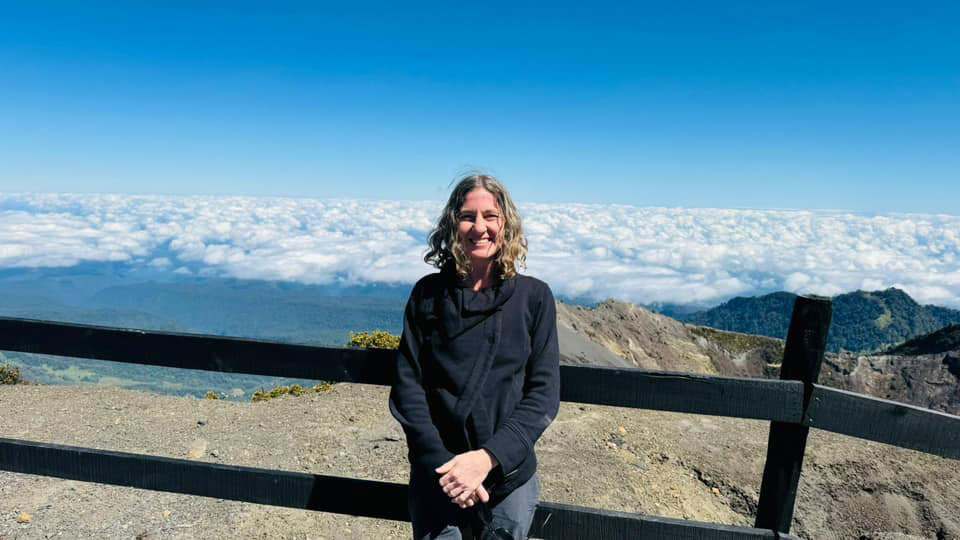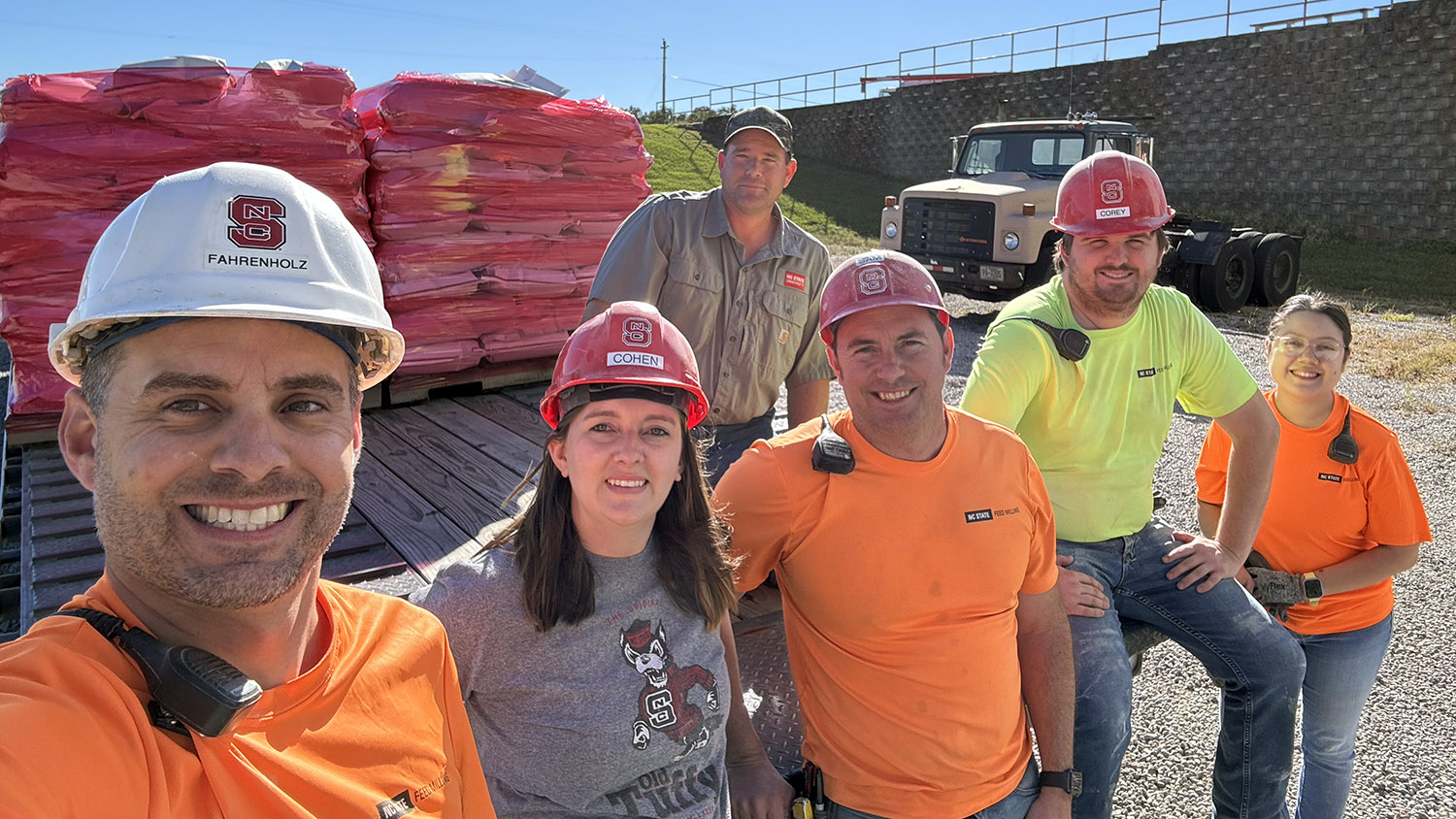It’s the season of fresh batteries, generators and bathtubs filled with water. September is National Disaster Preparedness Month, and here in North Carolina, that includes bracing for peak hurricane season.
This episode of Farms, Food and You is dedicated to helping folks across the state know where to go and what to do should they find themselves in the path of these destructive storms. We chat with Mike Yoder, the coordinator of emergency programs for NC State Extension, to learn what’s done behind the scenes to prepare counties for hurricanes and recovery efforts after hurricanes hit.
Additional Resources:
- During Stressful Times, Protect Yourself From Scammers
- Hurricane Preparedness
- Preparedness Factsheets
- Food Safety: Disaster Preparedness and Recovery
PODCAST TRANSCRIPT
HOST:
It’s the season of fresh batteries, generators and bathtubs filled with water. September is National Disaster Preparedness Month, and here in North Carolina, that includes bracing for peak hurricane season. Today’s episode of Farms, Food and You is dedicated to helping folks across the state know where to go and what to do should they find themselves in the path of these destructive storms. We’ll chat with Mike Yoder, the coordinator of emergency programs for NC State Extension, and learn what’s being done behind the scenes to get counties prepared for the storms and recovery efforts.
It was widely reported that the 2022 Atlantic Hurricane season would be an above-average active year for hurricanes, with scientists predicting between 17 and 22 named storms. At the time we recorded only three had occurred, but we’re not out of the woods yet. North Carolina is the fourth worst state for hurricanes in the U.S., hitting its peak for hurricanes mid-September through October. The amount of damage sustained is dependent on the path of the storm. A “Coastal Track” brings threats of high winds and coastal flooding from storm surge. An “Inland Track” usually causes nearly statewide damage from flooding and high winds. And a “Gulf Track” is mostly likely to cause flooding in the mountains.
Overseeing the preparedness and response for NC State Cooperative Extension is Mike Yoder.
YODER:
I’ve been doing this about 13 years and the role has changed over time. Initially, it was a matter of serving in the State Emergency Operations Center whenever there was a disaster, making sure the lines of communications were open with both the Department of Agriculture, but more importantly with Cooperative Extension personnel, across the state. And over time we’ve brought in more partners. So we now work with the state Animal and Agricultural Response Team, which does include the Department of Agriculture, but also includes many of the commodity group organizations like Farm Bureau, College of Veterinary Medicine. So that’s a public, private partnership designed to help with response to disasters.
Our employees really during a disaster really work for the county emergency manager and the county emergency managers, each kind of have their own expectations for Cooperative Extension. We may be helping run a human shelter. We may be helping run an animal shelter. In virtually every situation, we will do crop damage assessments and, building damage assessments where needed. We will also help farmers in a, especially in a flooded situation, determine help severe the flood is and what their options are for the crops that they had in the field. We may be doing search and rescue for livestock and helping rescue animals during. So the work that our people do varies somewhat by the county that they happen to be in. We’ve been very fortunate in the last, just in the last couple of years, we’ve had more of the county emergency managers step up and say, this is what we expect you to do. These are the things you can plan on doing. If in fact we have a disaster and that makes it much easier for our county staff to know ahead of time what their responsibilities will be. If in fact we do have a hurricane.
HOST:
Being prepared for emergencies is a year-round job. Hurricane season runs from June through November, and really heats up for North Carolinians in the fall.
YODER:
So we’ve had a series of meetings so far just to make sure that all of our communications people are on the same line. And that, you know, we’re starting to look lining up supplies and resources and so forth if we have to bring in hay for livestock, or provide transportation for livestock that needs to be moved. So we’ve started to have those conversations. In fact, those are pretty much ongoing year round. What we do with our county Extension staff this time of year is just remind them that it’s time to remind their clientele to be prepared, to make sure that they have enough food for themselves, but that they also have also have the supplies and equipment that they need to take care of their animals during any type of a disaster. So you’re right. We’re looking at usually a fairly short hurricane season when it comes to the bad hurricanes and it’s usually September, October, right. About the time we schedule many of our Extension meetings. But that’s the way it is in North Carolina. We’re just planning at this point and making sure that our people have the qualifications that they need to move forward.
HOST:
Extension is focused on helping agricultural and commodity groups, as well as home and business owners.
YODER:
So there are a number of places they can go. We have a website called NC Disaster. And they can go to that website and we try to keep that as up to date as possible on many different issues. It can be anything from how to re-enter a home after a flood, to mold mitigation, to food safety, to programs for youth, but also best management practices for livestock producers. We will continue to update that throughout the fall, especially during disaster situations. When we have hurricanes we’ll have animals probably that will need to be rescued. But we’ll also have farmers who are trying to determine whether or not they can safely harvest a crop and whether they can market that crop. If in fact it has been flooded and there are specific protocols in place that they need to follow. If in fact, they, they want to be able to do that. You know, we’re really focusing on from an agricultural standpoint making sure that we reemphasize those best management practices because really the best management practices that we teach on a regular basis are the practices that will help them survive a hurricane if in fact it’s possible,
HOST:
Yoder explains that the storms’ biggest threat to animals, crops and structures is flooding.
YODER:
That’s usually the case. The flooding is the real enemy in any type of a hurricane situation. And that’s why where the hurricane comes on land, how long it takes to pass through is really important. With Fran and Floyd, we had a lot of water deposited over the north central part of the state. It just so happens that we have the heads of about five different rivers in that area. And so we know when that happens, people down east about four or five days later are going to pay the price. And so, yes, flooding is something we really try to protect against as much as we can.
Because of the experiences we’ve had with past hurricanes, a lot of our livestock producers have learned, they need to maybe keep their hog houses or their poultry houses on higher ground. And I think they’ve done a nice job of doing that over the last 25 years, partially as a result of hurricanes Fran and Floyd. And the reason for that is that we lost about 3 million head of livestock in hurricanes Floyd and Fran, and those were devastating storms. And so we learned from that. The industry did a good job of moving their their hog houses, their poultry houses to higher ground. The animals that we can move would be the companion animals and would also in many cases be horses.
And what we have done in the past is we’ve made available on the internet temporary housing for those animals that have to be moved. In many cases, people won’t move their animals away from their location. So we simply encourage them to find higher ground where they can put those animals as safely as possible. Cattle also, because many of the cattle are on pasture; we’re not gonna be able to move them. So hopefully the producer has some pasture that’s on higher ground, so they can get those cattle out of the way.
HOST:
Extension also provides resources for recovery.
YODER:
But we work very closely with people in all different communities to try and enhance their recovery process. I will say, too, that one of the things that Cooperative Extension does that people don’t think about a whole lot is the mitigation aspect of a disaster. When you look at a community like Windsor in Bertie County that has flooded at least a half dozen times over the last 25 years. We have sent our researchers in to study why, in fact, that happens and determine what we can do to alleviate the issue in the future.
In some cases, there are things we can do in some cases there may not be, you know, Windsor sits about three feet above sea level, and when water backs up into the river, it has to have some place to go. So, there may have to be some interventions that take place, and those would oftentimes be state or state and federal collaborations to make those happen. So our researchers have done some great work field work in the area of storm mitigation as well.
HOST:
As we roll through peak hurricane season visit the Extension website for resources on preparation and recovery. And don’t hesitate to reach out.
YODER:
And a lot of that has to do with putting together your emergency plan. You know, do you have a kid at home? Do you have a plan where you’re going to meet if your family gets separated? We look at things like food safety what happens if my power goes out and I have a freezer full of food how long is that food good? And how should I cook or manage that food to extend the shelf life as long as possible. We look at things like a mold mitigation, which is a real problem when you have flooding. And how can I safely re-enter a home? If you’ve ever been in a flooded community, it doesn’t take long for that water to do a lot of damage. And so we provide information on that as well. Another area we focus on is providing youth programs for young people who you, you know, maybe because of a flood or because of, of other factors, really have little to do. And so giving those young people something to do during that disaster can be very important.
You know, I think it’s just important that people know that we’re here to serve them. And we’re here during a disaster. We don’t go away just because we can’t get to the office or because you know a town happens to be flooded. Our people continue to work. They can, they can communicate with us via in many cases it ends up being by phone because, you know, and in some cases, even cell phones don’t work during disasters because of the damage. But people need to understand that we’re here, even when things are tough, and we’ll be there after the storm to help them recover.
HOST:
Thank you for joining us on Farms, Food and You. This podcast is a product of NC State Extension and the College of Agriculture and Life Sciences at North Carolina State University. If you would like to support the show, please share this episode on social media and leave a review on your podcasting app of choice. Let’s talk soon!
- Categories:


